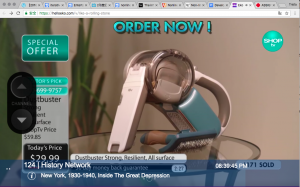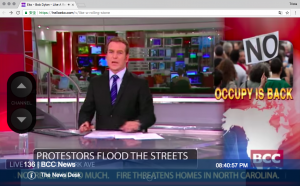During the making of our work, I found difficult to match every video in the same pace and same frame. We firstly filmed in three different locations, with I did same movement and the camera was set in the same position every time. But actually it is quite hard to do exact same movement, and the camera position might be a little bit different. As a result, I adjust the time duration of some pieces of video, and also edit the frame, for trying to match each scene. Finally they seems at the same angles and process on the same speed. Compare to project 3, the musics are in the same tone, so we can switch in different videos smoothly. We originally decided to use specific icons for each video as the thumbnails. For example, tree represents wood, water drop wave represents harbor, building represents city. But we cannot put icons in EKO, thus we just put words within at last. It looks simple but clear understand. The main concept of this work is to let the movement playing continuous through switching scene, so we put the figure in the same position of each scene. We achieve this but in a very limited representation — only 50 sec for the whole video. Furthermore, the figure occupies a small part in middle of the frame, so that the main sight is the environment (occupy most of the frame), the figure is just being the reference object of transition.
In response to the characteristics of online screen media, we have connected to interactivity, modularity, variability, nonlinearity, nonfiction content. The interactivity reflects on audience can view different locations depends on their choice. It is modular and variable because there are a combination of several pieces of media, and each pieces of media is functioning in relation to multiple other pieces of media. It belongs to nonlinear work, without a storyline to force audience to follow the sequence — they can access to any scene by clicking thumbnails. Also, it has a nonfiction content. The setting is real; visual contents are filmed in reality; auditory contents are from musical instruments played in reality as well. In my opinion, our project is totally being web specific. Because it is real-time transition, which traditional media such television cannot achieve.
There are several disadvantages of our work. An obvious one is the performer (me) just makes small and simple actions so that it is more easily to match, since we want the work processes continuous. But it seems boring with those small and short actions, it would be better to making more interesting actions. In addition, we didn’t achieve cross-platform. We were decided to leave a link to Facebook at the end for the comment section, but we didn’t since we couldn’t find the way. Lastly we still not separate the musics and videos, but it looks better than I thought with Sam’s beautiful songs. It would be more interactive if audience can match the music and video clip on their own. Those failings are caused since we are unfamiliar with EKO. Our biggest shortage is we haven’t spend enough time to study the media tool deeply, thus makes a few bugs of the work we’ve done.
Looking back to the beginning of the semester, we have left a couple of question to explore through the studio experience. I think we have resolved some after project works, discussions and research. Firstly, the biggest difference between small scale production (online media production) and traditional media is the former one is interactive; viewer is able to make selection on different media fragments as well as make reactions in real-time. Traditional media is always produced by formal/large-scale press, which could not satisfy every audience, and could not interact with audience either. Secondary, online content is a big interest to people since it has various advantages: efficient, variable, selectable, real-time, interactive, diverse/multiple, gapless… For example, we can switch to another media platform immediately as long as clicking the hyperlink. In order to attract audience by operating social media, we should setup the target audience, and provide the information they want to receive as much as possible. There are thousands of media contents and media forms can be chosen on the internet.
From Thinking in Fragments, I learned a lot of useful things, not only about the course theme, but also the study methods during tutorial and collaboration. I want to thank Hannah and my classmates; they give me a lot of helps so that I’ve grown up a lot there.


